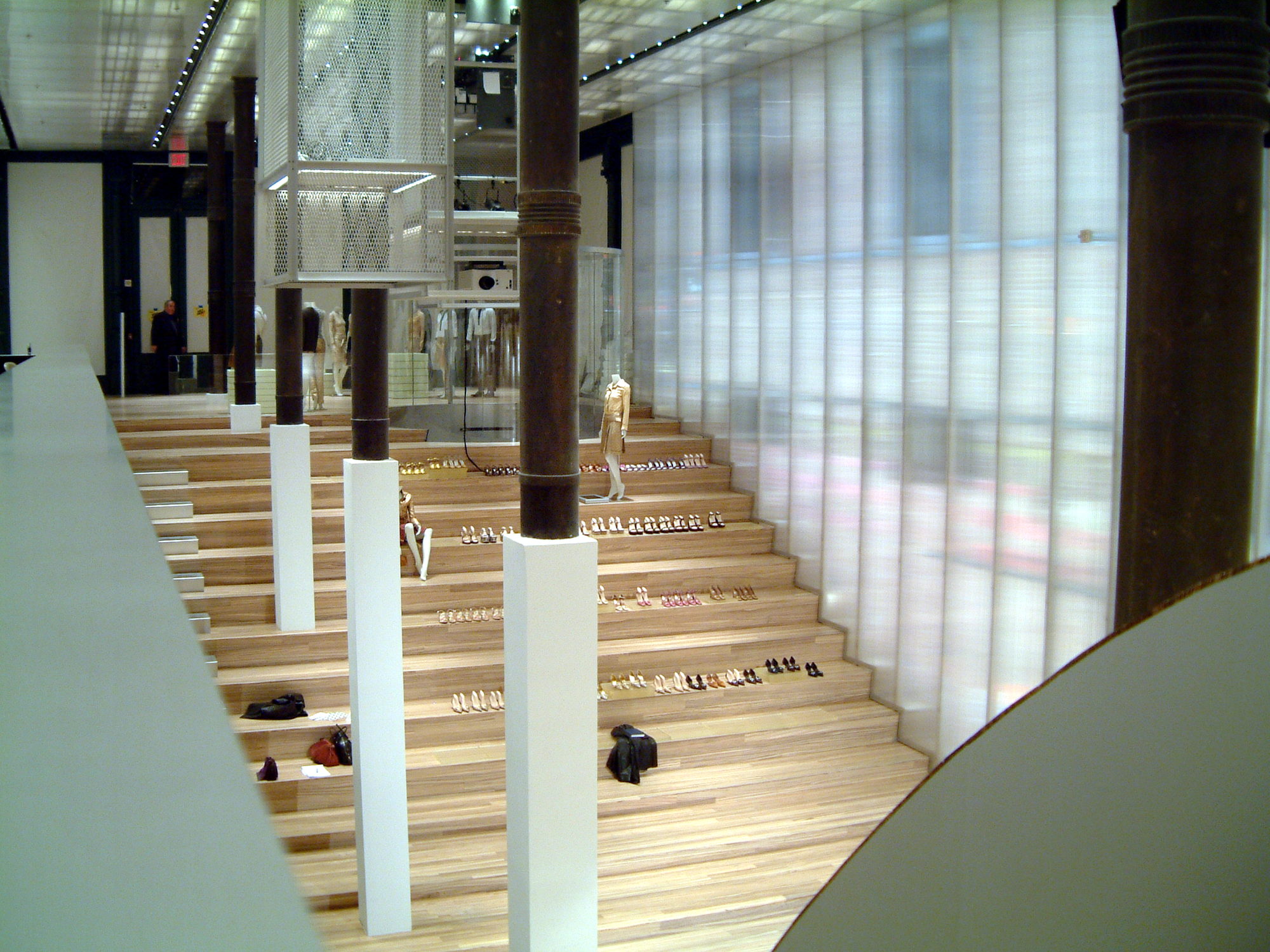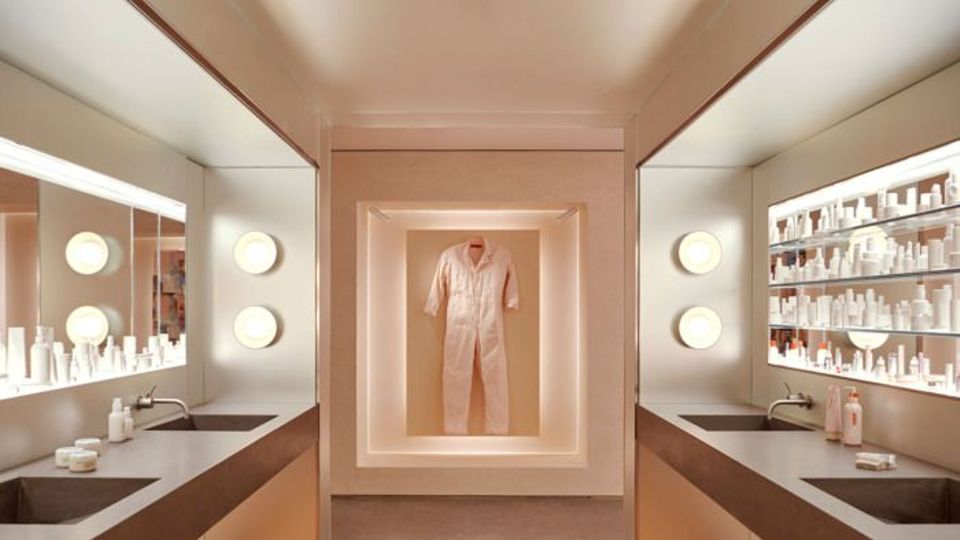
Social Media Blog 4: Where Do Brands Live?
Located in the footprint of the former Guggenheim Museum, Prada’s NY SoHo store is almost un-shoppable. The main floor holds very little product with the space dominated instead by an oversized glass elevator. Most of the shopping takes place on the basement level which is compact and oddly lit. These two floors are connected by what looks like a wooden half-pipe called “the wave”. One side of “the wave” doubles as stadium style seating while the other contains a fold out stage which can quickly turn the store into an event space. The store was designed by architect Rem Koolhaas in 2001 costing Prada $4 million. So, why does this store make it so hard for us to buy our Prada backpacks? And what does this have to do with social media?
All spaces serve a purpose, and the purpose of this Arte Povera inspired Prada store is not to sell products but to sell experiences and, most importantly, to sell the Prada brand. In recent years companies have begun to hire branding agencies and not architects to design their retail spaces. This is because a brick and mortar store is simply another touchpoint in the branding ecosystem.

Now, here is where social media comes in. Social media platforms represent the most direct touchpoint between brands and followers where people can literally have conversations with brands. Traditionally, a company would open a brick and mortar store as the first step in introducing their products to the market. Then, they might decide to invest in an ecommerce website so that they could sell their products to a wider audience. Later, they may chose to establish their brand on a handful of social media platforms in order to increase brand awareness and direct new audiences to their ecommerce or physical stores. This plan inherently involved a hierarchy of touchpoints where brick and mortar was king and branding decisions were made using a top down approach.
Now this model has been totally turned on its head. Social media is no longer the final step in establishing a brand, it’s often the centre of an entire brand ecosystem and the source of a brand’s personality, aesthetic and tone of voice. Physical brand destinations such as a brick and mortar store are now often modelled on the digital and social presence of that brand.
Glossier, the unicorn beauty brand born from Emily Weiss’s blog “Into the Gloss”, is the perfect example of this. The brand launched in 2014 using a direct to consumer model meaning that the Glossier brand lived solely on their thoughtfully designed website and rose tinted social media accounts. The brand identity was communicated exceptionally well in these two touchpoints and when the brand opened its first permanent bricks and mortar store in 2018 it was the real life manifestation of a brand which previously existed only in the online world.

The point here is that brands live in every single touchpoint regardless of whether that touchpoint is in an online space or in the real world. The idea of tacking on a social media account to an already fully formed brand is becoming old fashioned. For many hugely successful businesses, social media is at the centre of their brand ecosystem. Just as Prada realised in 2001, not every touchpoint will sell products, but every touchpoint will sell the brand experience.
If you’re interested in selling your brand experience on social media, give this article a read and get in touch.
Sources
https://oma.eu/projects/prada-epicenter-new-york
Keep Reading

Her apron strings and her purse…

Your brain on criticism

The writing is on the (Waterford) wall
1 page, a million pixels = $1Million

Apple does it again nailing WFH

Digital and Social Media Marketing Insights for 2019

Social Media Marketing Statistics for 2020

Social Media Blog 1: Crashing Social Media

Social Media Blog 2: The Cost of Social Media Marketing

Social Media Blog 3: How to Grow Social Media Following...

Social Media Blog 5: Being Authentic on Social Media

Social Media Blog 6: Checking in on Brand Loyalty

Social Media Blog 7: The Power of Niche on Social Media

Social Media Blog 8: Online Privacy

Digital and Social Media Trends for 2021

How Can Brands Celebrate Pride Month?

Digital and Social Media Trends for 2023

5 Answers to Give a Web Agency

The Essentials of Website Security
